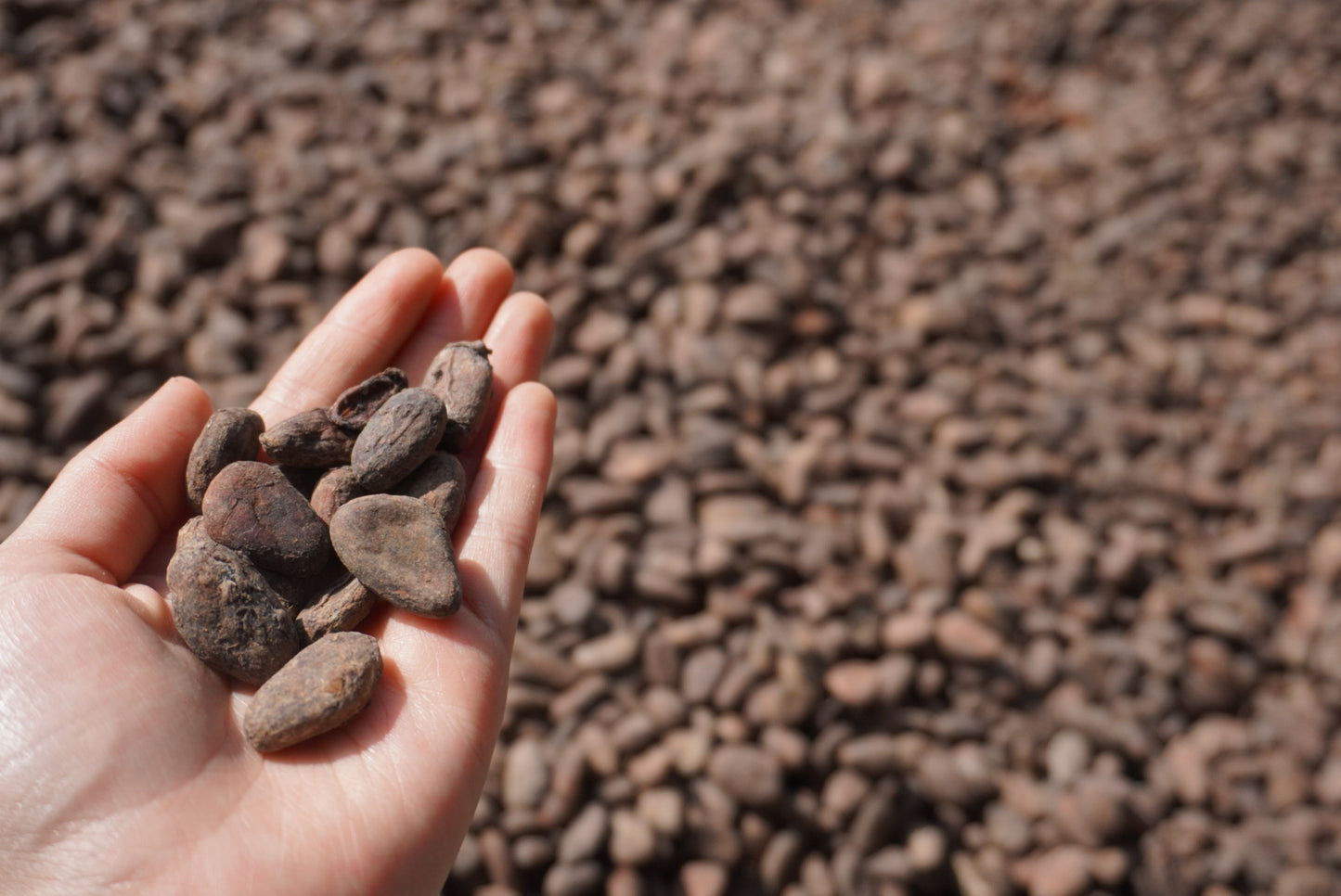
![]() March 30, 2022
March 30, 2022 ![]() Dale Erwin
Dale Erwin
Returning back the way we came, we flew through the lush landscape alongside long-legged water birds.
We alighted at the white and green painted buildings of UOPROCAE, one of Conexión Chocolate’s partner cooperatives. Here our farmers collect their harvested cacao together to begin the post-harvest process. The sharp smell of fermentation drifted through the iron doors, beckoning us in. The large central courtyard we entered was dominated by the drying surfaces - currently empty large wooden platforms on rollers - and the sun-warm wood donated its mellow fragrance to the intoxicating ferment.

Our guide indicated the receiving area for the cacao, where they make sure the lots are kept separate - noting the producer, weight, and certifications of the cacao - before depositing the pulp covered cacao beans into the fermentation boxes. We ducked into the shady overhang protecting the boxes to watch some young men unloading a fermented load from the bottom-most stair-step.
The fermentation boxes are arrayed on 3 stair steps. Fresh cacao is placed in the top laurel wood box (laurel is used because it is local and abundant and flavor-neutral) and, over the next 5 or so days, it will cascade down the stairs at the command of attendants with wooden shovels. They monitor the cacao carefully and frequently to ensure the fermentation remains aerobic. If the batch suffers from lack of oxygen and the fermentation turns anaerobic, toxins can develop and/or lactic acid can build up - ruining an otherwise flavorful batch of cacao.
I placed my hand under the lid of a box and could feel the humid heat emanating from the batch. Yeast and microbes were hard at work eating the sugary pulp, heating the whole system up to about 50 degrees Celsius. In this heat, the pores of the cacao bean open up and good citric acids enter and break down the compounds inside, unlocking the complex process of flavor development.

I turned back to the young men who were sorting through a finished batch to remove poorly fermented or damaged beans. The QC-approved lot was then dumped out on one of the wooden platforms in several huge bucketfuls. Swaddled against the sun, another young man carefully spread the beans out with a wooden rake. By now the sun was well past its zenith and the slanting rays fell more gently on the cacao. In this equatorial Ecuadorian climate, drying is mostly done in the afternoons, for a few hours a day. If the beans get too hot and dry too quickly they will crack and be brittle and unusable.
However, winter is the rainy season, so too much sun is not the problem at this time of year. In the case of rain on the one hand, or extreme noon-day sun on the other, the platforms slide on rollers underneath translucent awnings. The beans are dried over the course of 7 days in the sun, though wintertime monsoons can lengthen the process to 12 days.
Once the beans have reached a moisture content of 7% (optimum for transport to avoid brittle bean breakage), ascertained by visual and technological readings, they go through a sorting machine to be graded. They are sorted yet again for quality and then sent off on the next leg of their journey.
This is the moment where Conexión Chocolate picks up the beans to take them to the factory where we will transform them into beautiful chocolate. Obviously, our journey with the cacao doesn’t start with buying the beans. We are there during post-harvest processing, fermentation and drying, to ensure that this most crucial step in flavor development goes off without a hitch.

